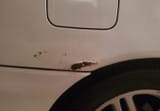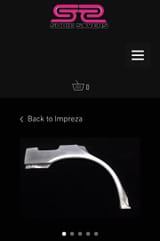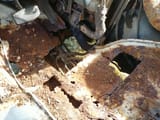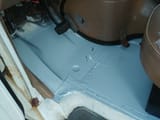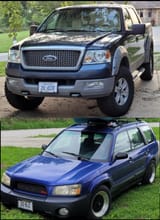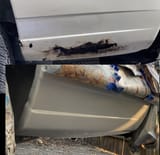>>28507084 (OP)A relatively small rust patch like that is likely still just superficial or a few bungholes underneath at worst. A sport recoating or gapfiller and recoating would do the trick.
A sandblaster is the easiest thing for spot jobs like this. Else, use a brass brush and 400 grit alox pad to remove the scale and scuff the paint to expose any underlaying rust that could be underneath. Then spray some rustoleum rust dissolving gel and let it sit to strip it all off. Clean the whole area with soap water and 90+% alcohol spray to remove any residues.
If there are bungholes, you will need to fill them and sand to blend it smooth with the body lines. This is the part where a lot of people will say to use body filler. Problem is 99% of the stuff marketed as 'body filler' are polyester resins. Polyester resins are like sponges that suck up water. And are also stiff and can crack when the substrate materials flex from loading or thermal cycling. They're honestly pretty shitty for any application that needs to actually be used and last longer than long enough to sit in a used car lot for the next schmuck to pick up.
The oldhead trick is to use structural adhesives to fill small holes or complicated geometries (do not use pure silicone; it will repel your paint just as much as it repels water). For large gaps you can just weld or braze new sheet metal in - you will still need to apply filler material for a smooth finish though. Or use fiberglass patches with the same adhesive. Bostik ISR 70-03, OB1 Multi-Surface, 3m Marine 5200, or Loctite Pl 8X are all good products. If for whatever reason you can't get those, epoxy putties like JB Weld Steelstik or Hercules Propoxy or PC-7 can be used in a pinch. Use a razor or chisel to shave off excess and follow manufacturer's instruction for how long it should set. Use a scotchbrite scuff pad or 600 grit paper to smooth with the body work, clean, and apply coating system of choice.
